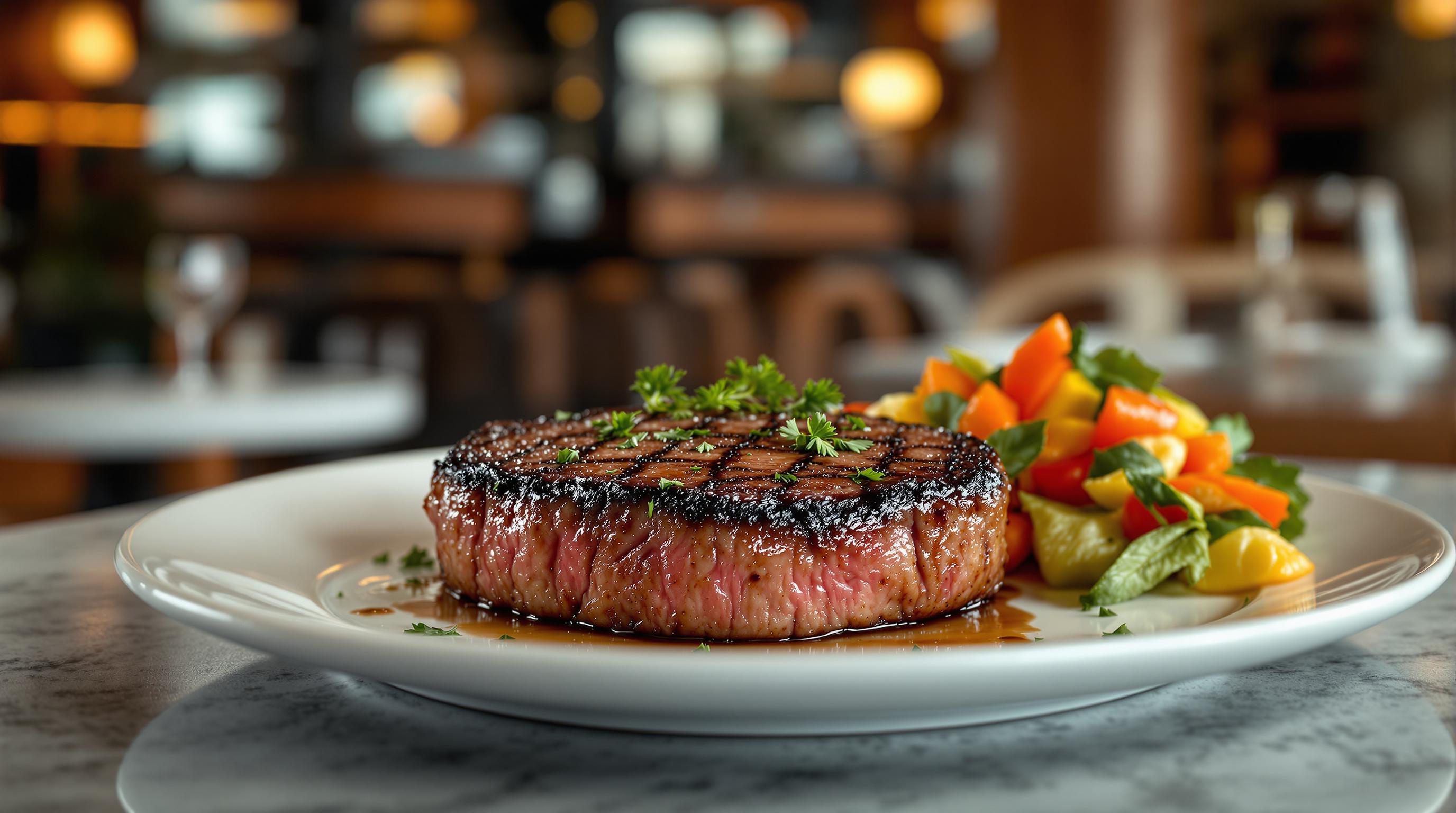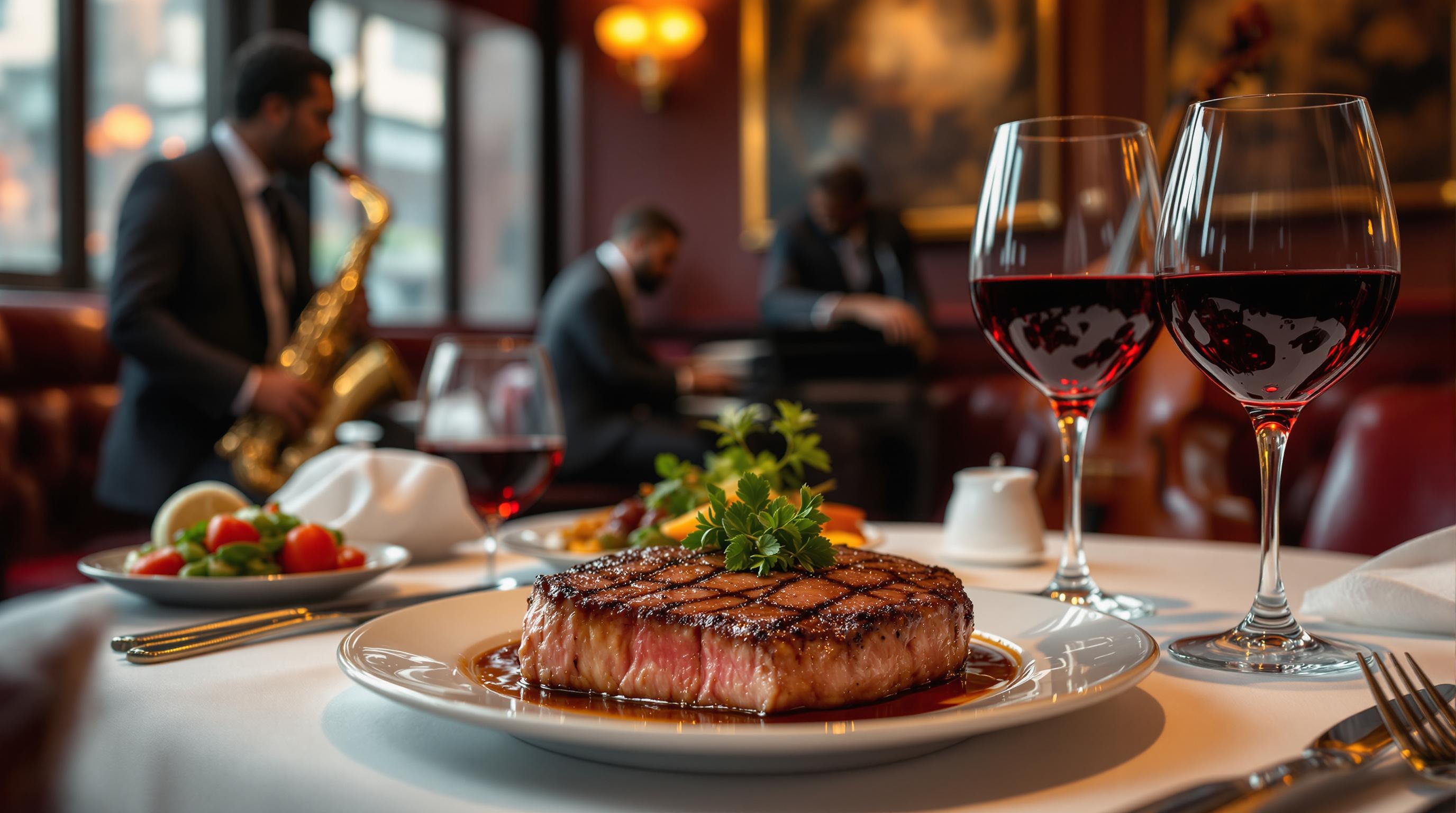Want tender and flavorful flank steak? Here’s how to do it right:
- Marinate Smart: Use acids (lime juice, vinegar), enzymes (pineapple, papaya), and oils to break down tough fibers. Marinate for 6–8 hours, but no more than 24 hours.
- Tenderize Physically: Pound with a meat mallet, score the surface, or dry brine with kosher salt for up to 24 hours.
- Cook at High Heat: Grill, broil, or pan-sear at 450–500°F. Aim for medium-rare (135°F) for the best texture.
- Rest Before Cutting: Let the steak rest for 5–10 minutes after cooking to lock in juices.
- Slice Against the Grain: Cut thin slices perpendicular to the muscle fibers for a tender bite.
Quick Tip: Prepping and slicing the right way makes all the difference. Follow these steps to turn this lean, budget-friendly cut into a delicious meal.
Marinating Methods
Tenderizing Ingredients
Marinades work by breaking down tough fibers in meat using a mix of acids, enzymes, oils, and salt.
| Type | Examples | Purpose |
|---|---|---|
| Acids | Lime juice, vinegar, wine | Soften muscle fibers |
| Enzymes | Pineapple, papaya, kiwi | Naturally tenderize proteins |
| Oils | Olive oil, vegetable oil | Spread flavors evenly |
| Salt-based | Soy sauce, kosher salt | Draw moisture into the meat |
Tip: Too much acid can make the meat overly soft, so use it in moderation.
Marinating Duration
Timing plays a key role in how well the marinade works:
- Minimum: 2 hours
- Best range: 6-8 hours
- Maximum: 24 hours
If you're using enzyme-heavy ingredients like pineapple or papaya, cut the marinating time in half. Always keep the meat refrigerated at 40°F (4°C) while marinating.
Ensuring Even Coverage
To get the most out of your marinade, make sure it coats the meat evenly:
- Use a resealable plastic bag or a shallow dish to hold the steak.
- Pour enough marinade to cover all surfaces - about 1/2 cup per pound of meat.
- Massage the marinade into thicker sections for better absorption.
- Turn the meat every 2-3 hours to ensure all sides get coated.
Before cooking, pat the meat dry to help it brown properly. If you plan to use leftover marinade as a sauce, boil it for at least 5 minutes to make it safe to consume.
Marinating not only tenderizes your steak but also sets the stage for perfect cooking.
How to Tenderize a Beef Flank Steak
Physical Tenderizing
These techniques help soften tough fibers before cooking.
Meat Mallet Tips
Using a meat mallet correctly ensures the steak's texture isn't compromised:
- Wrap the steak in plastic wrap to prevent sticking.
- Use the textured side of the mallet for tougher cuts.
- Flatten to a consistent thickness of about 1/2 inch.
- Start pounding from the center and move outward with steady strikes.
- Pay extra attention to thicker areas for even thickness.
Pro tip: No meat mallet? A heavy skillet or rolling pin works just as well.
Surface Scoring
Making shallow cuts across the steak's surface not only tenderizes but also helps marinades penetrate better:
| Scoring Pattern | Depth | Spacing | Purpose |
|---|---|---|---|
| Diamond | 1/8 inch | 1 inch apart | Best for tenderizing |
| Parallel | 1/16 inch | 1/2 inch apart | Improves marinade absorption |
| Crosshatch | 1/8 inch | 1-inch squares | Promotes even cooking |
Score at a 45° angle, ensuring the cuts are shallow. Repeat on both sides for the best results.
Salt Treatment
Salt tenderizing, or dry brining, breaks down proteins while enhancing flavor:
1. Apply Salt
Sprinkle 1/2 teaspoon of kosher salt per pound of steak evenly on both sides. Coarse salt works better than fine salt for even distribution.
2. Let It Rest
Allow the salted steak to rest. Leave it at room temperature for 45–60 minutes or refrigerate for up to 24 hours, loosely covered.
3. Prep for Cooking
Before cooking, pat the steak dry with paper towels. The salt will have been absorbed, tenderizing the meat and locking in moisture.
Note: Avoid salting right before cooking, as it draws moisture to the surface and hinders proper browning.
These steps set the stage for perfectly cooked steak.
sbb-itb-e6be165
Cooking Guidelines
After tenderizing, cooking your flank steak the right way ensures it stays flavorful and tender. Timing and technique are key to keeping the steak juicy and easy to slice.
Best Cooking Methods
Flank steak shines with high-heat methods, which lock in juices and create a rich, caramelized exterior:
| Method | Temperature | Best For | Advantage |
|---|---|---|---|
| Grilling | 450-500°F | Outdoor cooking | Adds smoky flavor, even char |
| Broiling | 500-550°F | Indoor cooking | Ensures consistent browning |
| Pan-searing | 400-450°F | Apartment cooking | Better control over crust |
Make sure to preheat your grill or skillet until water droplets sizzle and evaporate instantly.
Temperature and Timing
Hitting the right internal temperature is crucial for a tender steak:
- Rare: 125°F (bright red center)
- Medium-rare: 135°F (warm red center) - ideal for the best texture
- Medium: 145°F (pink center)
- Well-done: Not recommended - can become too tough
Cooking time depends on the steak’s thickness:
| Thickness | Time Per Side (Medium-Rare) |
|---|---|
| 1/2 inch | 2-3 minutes |
| 3/4 inch | 3-4 minutes |
| 1 inch | 4-5 minutes |
Pro tip: Always rely on a meat thermometer for accuracy. Insert it into the thickest part of the steak, avoiding any fat or bone.
Resting Period
Resting the steak after cooking is essential for locking in juices and maintaining tenderness:
- Remove the steak when it’s 5°F below your target temperature. The heat will continue to rise by 5°F during the resting period.
- Place the steak on a warm plate or cutting board.
- Loosely cover it with aluminum foil.
- For thicker steaks, add 1-2 extra minutes of resting time for every additional 1/2 inch of thickness.
This resting time allows the juices to redistribute evenly throughout the meat. Cutting into the steak too soon will cause the juices to spill out, leaving it dry and less tender. Skipping this step is a common mistake - don’t skip it!
Cutting Techniques
To keep your flank steak tender, always slice it against the grain.
Cross-Grain Cutting
Flank steak has long muscle fibers that can make it chewy if not sliced properly. Look for the grain - those parallel lines running along the surface - and run your finger over it to confirm the direction of the fibers.
For tender bites, cut perpendicular to these fibers. Using the right knife can also make a difference, so choose a sharp blade to achieve clean, precise cuts.
Summary
To make a tender and flavorful flank steak, follow these steps. Start by marinating the steak with acidic ingredients for 4–12 hours. Then, use physical tenderizing techniques such as using a meat mallet or scoring the surface in a diamond pattern. About 45–60 minutes before cooking, treat the steak with salt to enhance flavor and texture.
Physical tenderizing is key to breaking down tough muscle fibers. Use a mallet to pound the steak to an even thickness of about ½ inch, or score the surface to help the marinade penetrate. After cooking, let the steak rest for 5–10 minutes so the juices can evenly redistribute.
Finally, slice the steak properly. Find the direction of the muscle grain and cut perpendicular to it using a sharp knife. Make thin slices, about ¼ inch thick, to maximize tenderness.
These techniques work together to turn this lean cut into a delicious and tender dish.


